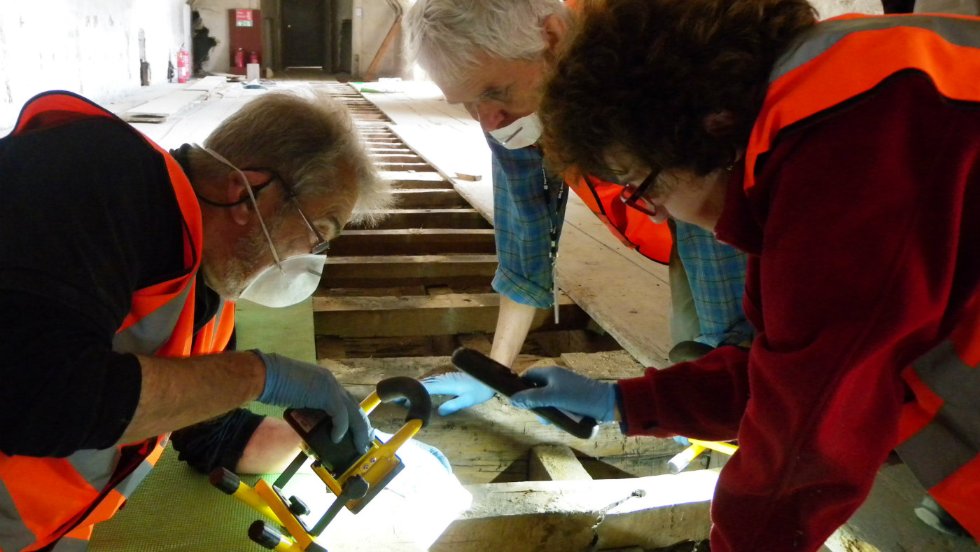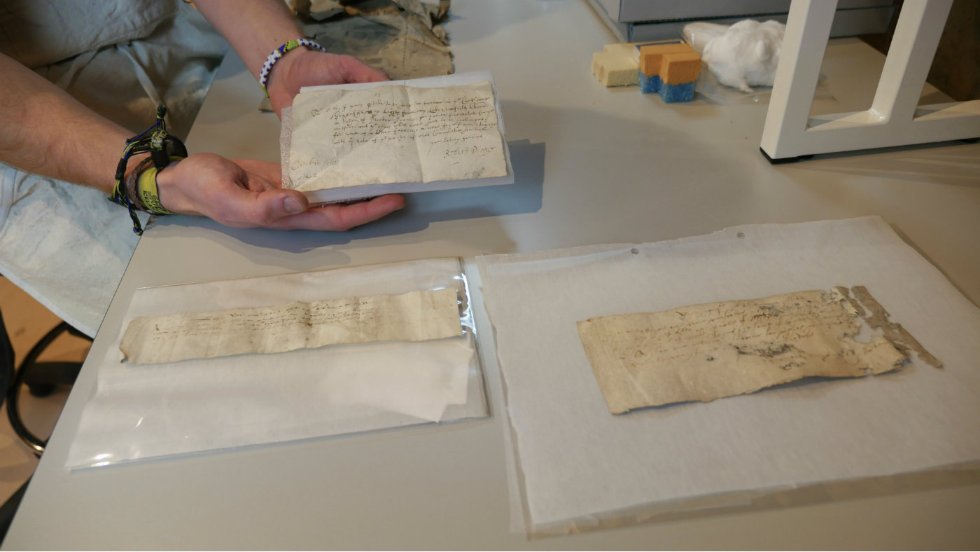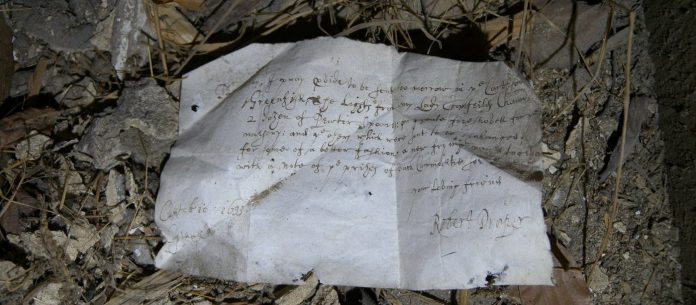Three letters dating back to the seventeenth century have been discovered under the floorboards at the National trust property of Knole House and have now gone on display in the Visitor Centre.
Two of the remarkable letters, dated May 1603 and October 1633, were discovered in one of Knole’s attics, the South Barracks, by Jim Parker, a volunteer with the archaeology team and at the property.
The third, dated February 1622, was found by building contractor Dan Morrison amongst the debris in a ceiling void close to the Upper King’s Room in the attic.
The exciting discovery was made as work took place in the attics as part of Knole’s huge building and conservation project, supported by the Heritage Lottery Fund. The five-year project will open more spaces to the public, including the attics where the letters were found in 2018
A window on the past
All three letters were written on rag paper, a high quality parchment popular during the seventeenth century. The 1633 letter is an appeal for domestic items to be sent to Copt Hall in Essex from a house in London, giving an intriguing insight into life in a country house 400 years ago. It is beautifully written, suggesting it was compiled by an educated servant.
The letter reads:
Mr Bilby, I pray p[ro]vide to be sent too morrow in ye Cart some Greenfish, The Lights from my Lady Cranfeild[es] Cham[ber] 2 dozen of Pewter spoon[es]: one greate fireshovell for ye nursery; and ye o[t]hers which were sent to be exchanged for some of a better fashion, a new frying pan together with a note of ye prises of such Commoditie for ye rest.
Your loving friend
Robert DraperOctobre 1633
Copthall
Records at Knole show that many large items, including trunks of linen and furniture, were moved from Copt Hall to Knole around this time. Trunks filled with papers were stored in the attic after the move, explaining how some may have slipped beneath the floorboards.
The connection between Knole and Copt Hall came about by the marriage between Frances Cranfield, daughter of the Earl of Middlesex who owned Copt Hall, to Richard Sackville the 5th Earl of Dorset and owner of Knole in 1637.
The collection at Copt Hall was moved to Knole during the early eighteenth century and forms a substantial part of collection now in the showrooms.


After 400 years in their humble resting place the letters were ingrained with dirt and needed careful cleaning. This was carried out by Jan Cutajar, a UCL intern on placement at Knole as part of his MSc in Conservation. Knole’s own Conservation Studio was still under construction so Jan worked on the letters at UCL’s specialist labs in London.
First the letters were photographed to provide a record of their original state. Jan then set to work cleaning using delicate brushes, rubber powders and archival document cleaners. As the letters were crumpled they were then placed in a hermetically sealed humidifying chamber to relax the paper fibres before they could be smoothed in a paper press.


